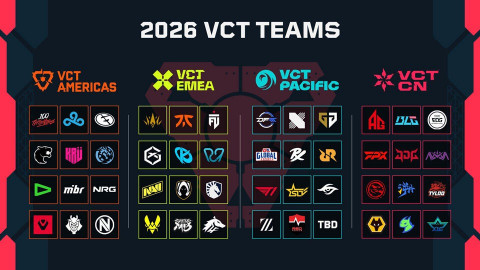
On July 28th, Legend Young Beyond will face-off against Lucky Future Zenith, one of the top teams in Chinese Overwatch Contenders. It might seem like any regular match in Overwatch Contenders, but with a closer look, you’ll notice that it’s not like any other Chinese matches. None of the players in these two Chinese teams are Chinese. In fact, they are all Korean, and Korean dominance in non-Korean regions is slowly becoming a problem.
Overwatch Contenders is a major tier tournament that was designed to give the opportunity for new and upcoming talents to show off their skills for Overwatch League teams. Currently, there are 7 regions and each of the regions, with the exception of the Pacific, are “semi-locked” and teams owned by other regions are not allowed to participate. However, there are no rules on foreign players playing in different regions, and without clear limitations or rules on this issue, players from stronger regions, like Korea, will continue to heavily influence other regions, such as China, Pacific and North America, and it is hampering the growth of local talent.
Blizzard needs to have an official stance on this issue and they need to put a limit on how many import players a team can have to prevent full Korean teams playing in non-Korean regions.
How are the Korean players dominating in other regions?
Half of all non-Korean regions are heavily influenced by Korean players and teams. The winners of both Pacific and Chinese Overwatch Contenders were full Korean teams in Season 1. In NA, the winner, Fusion University had 2 Korean players. But, this doesn’t closely resemble the full extent of Korean influence.
In Season 1, 33% of the teams in all 3 regions had at least one Korean player. In NA, 58% of the teams had at least one Korean player, and 25% of both China and Pacific Contenders teams had at least one Korean player.

The number of Korean players in all 3 of the regions has increased in Season 2. In Season 2, 44% of all teams in the three regions combined had at least 1 Korean player. Two-thirds of all teams in NA has at least one Korean player. In Pacific, 5 out of 12 teams are fully Korean.

This isn’t just about the number of players. Koreans players have a significant influence on the outcome of the tournaments. For Season 1 of Contenders, the percentage of Korean players in the upper brackets were increasing every stage. By semifinals, 42% of all teams in the three regions had at least 1 Korean player. In the finals, the number increased to 67%, and all 3 regional winners were either fully Korean or had at least 1 Korea player.

With 4 former Korean OWL players playing in NA, 5 full Korean teams in the Pacific and with a new Chinese team with a couple of Koreans, it won’t be hard to imagine that the trend of teams with Korean players taking the stage will continue in Season 2.
Is this really a problem?
It may not be a problem right now, but I would argue that it could lead to problems in the future. First, allowing Korean imports in regional tournaments will take away opportunities for local talent to grow and gain tournament experience.
Also, despite what most people might think, it will also decrease the competitiveness of the tournament. Both Pacific and Chinese Contenders had winners that had full Korean rosters. While the finals were exciting to watch, the most of the local teams were struggling against the Korean finalists. It means that, realistically, only 1 or 2 top teams could barely compete against Korean finalists and the rest can barely get through the stages against them.
What can be done?
There should be a limit on how many foreign players can play for a local team and reduce the maximum number to 2 foreign players per team. By reducing the number of foreign players in a local team, non-Korean regions can give more local players the opportunities to play.
This is not a novel idea. In 2014, League of Legends introduced an “Interregional Movement Policy” (IMP) which would limit the number of “non-resident” players to 2 out of the 5-man roster. They also included strict rules on what should be considered as a “resident player”, which I don’t think Overwatch Contenders need to worry about now but should consider in the future.
Also, the Pacific region should not allow Korean teams to participate. Korea has their own Contenders region, it does not make sense for teams in the Pacific be disqualified to play because of tier 2 Korean teams. While it is true that the better teams should be given a chance for the Contenders spot, but how can Pacific region improve as a whole if their spot is being taken over by a more dominant region? They need the experience and support by participating in Contenders.
However, the only foreign personnel that should be allowed in local teams without restrictions should be coaches. Foreign coaches should be able to help small and local contenders team to give these teams the opportunity to have advanced training regiments and strategies from countries where esports are taken more seriously.
Sort by:
Comments :0






